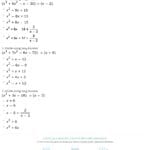The Bolzano-Weierstrass Theorem is a fundamental concept in calculus that explains why certain patterns in infinite sequences of numbers eventually converge. It’s a powerful tool for understanding the behavior of infinite sets and has surprising applications in various fields.
Decoding Infinity: What the Theorem Tells Us
The Bolzano-Weierstrass theorem, while sounding complex, is built upon a fairly straightforward idea. It helps us understand what happens when we deal with infinite sequences of numbers, particularly those that are bounded. Imagine a sequence of numbers confined within a specific range, like a group of runners staying within the boundaries of a racetrack. They can move around within those limits, but they can’t escape. That’s a bounded sequence.
This theorem deals with convergence. Picture a sequence of numbers getting progressively closer to a specific value. This value is the limit of the sequence, and we say the sequence converges to that limit. The Bolzano-Weierstrass theorem tells us that if a sequence is both infinite and bounded, then it must contain a subsequence that converges to a limit. A subsequence is simply a smaller group of numbers selected from the original sequence, keeping their original order. Think of it like choosing specific chapters from a book – you’re still following the original narrative, just focusing on specific parts.
So, even within a seemingly chaotic, infinite collection of numbers restricted within a certain range, there’s always a hidden order, a smaller group steadily progressing toward a single destination. Let’s illustrate with an example: consider the sequence that alternates between 1 and -1: 1, -1, 1, -1, and so on. This sequence never settles on a single value; it perpetually oscillates. Therefore, it doesn’t converge. However, it is bounded, as all its values are trapped between -1 and 1. If we extract every other number, starting with the first ‘1’, we obtain the subsequence: 1, 1, 1, 1,… This subsequence clearly converges to 1. The Bolzano-Weierstrass theorem guaranteed us a convergent subsequence, and there it is! Did you know that AVIATES is an acronym? Click here to learn more about the aviates acronym.
Key Concepts Explained
| Term | Description | Example |
|---|---|---|
| Sequence | An ordered, infinite list of numbers. | 2, 4, 6, 8, 10,… (even positive integers) |
| Bounded Sequence | A sequence whose values all lie within a specific range. | All numbers in the sequence are between -10 and 10. |
| Subsequence | A smaller group of numbers selected from the original sequence, preserving their original order. | From 2, 4, 6, 8, 10,…, we can choose 4, 8, 10,… as a subsequence. |
| Convergent Subsequence | A subsequence whose terms get arbitrarily close to a specific value. | 1, 1/2, 1/3, 1/4,… converges to 0. |
Proving the Theorem
Mathematicians have devised several ways to prove the Bolzano-Weierstrass theorem. Two common approaches include:
The Monotone Subsequence Approach: This method first demonstrates that any infinite sequence, whether bounded or not, must contain a monotone subsequence. A monotone subsequence is one where the numbers either consistently increase (non-decreasing) or consistently decrease (non-increasing). Then, it shows that if this monotone subsequence is also bounded, it must converge.
The Nested Intervals Approach: This method works by repeatedly dividing the interval containing the bounded sequence. One of the resulting halves must contain infinitely many terms of the sequence. This process is repeated, creating smaller and smaller nested intervals, each still containing infinitely many terms. These intervals eventually shrink down to a single point, which represents the limit of a subsequence.
Why Does It Matter? Significance and Applications
The Bolzano-Weierstrass theorem is more than a mathematical curiosity. It has important implications in several areas:
Sequential Compactness: In certain spaces, like the number line or a plane, if a set of numbers is closed (contains its boundaries) and bounded, then every sequence from that set has a convergent subsequence whose limit is also within the set. This property, sequential compactness, is fundamental in analysis.
Heine-Borel Theorem: This theorem connects compactness with closedness and boundedness, with the Bolzano-Weierstrass theorem playing a key role in this connection.
Economics: The theorem finds applications in economic modeling, helping demonstrate the existence of stable economic states (equilibria).
Optimization: It helps guarantee that when searching for the maximum or minimum value of a continuous function on a closed and bounded interval, this optimal value actually exists.
Boundaries of the Theorem: Limitations and Extensions
While powerful, the Bolzano-Weierstrass theorem has its limits. It mainly applies to finite-dimensional spaces, such as the number line, the plane, or 3D space. In infinite-dimensional spaces, the theorem as stated doesn’t hold. However, generalizations and variations have been developed for more complex spaces, such as metric and topological spaces. Research in this area is ongoing, and our understanding continues to evolve.
Turning the Tables: Is the Converse True?
The converse of the Bolzano-Weierstrass theorem asks: If a sequence has a limit point (a value the sequence approaches infinitely many times), does that mean the sequence is bounded? The answer is no. A sequence can be unbounded and still have a limit point.
Consider the sequence 1, 1, 2, 1, 3, 1, 4, 1, and so on. The number ‘1’ is a limit point because the sequence repeatedly returns to it. However, the sequence is unbounded as it contains increasingly larger numbers (2, 3, 4, etc.). This demonstrates that a limit point doesn’t necessitate boundedness.
The Bolzano-Weierstrass theorem and its converse behave differently in various mathematical spaces. In some metric spaces, the converse may still be false, while in others, it may not even be applicable in the usual sense.
Expanding the Horizon: Generalizations of the Theorem
The Bolzano-Weierstrass theorem generalizes to more complex spaces through the concept of sequential compactness. In a sequentially compact metric space, every bounded sequence has a convergent subsequence. This is a broader version of the original theorem, extending its application beyond the real numbers.
Sequential compactness is a powerful property. It implies that in such spaces, no matter how you choose a sequence, you can always find a subsequence that converges to a limit within that space.
The sequential compactness theorem is considered a generalization because it applies the core principle of the Bolzano-Weierstrass theorem to a much wider class of spaces. While the original theorem applies to real numbers, the sequential compactness theorem applies to any sequentially compact metric space.
| Feature | Bolzano-Weierstrass Theorem | Sequential Compactness Theorem |
|---|---|---|
| Space | Real numbers (ℝⁿ) | Sequentially compact metric spaces |
| Sequence | Bounded sequence of real numbers | Bounded sequence in the space |
| Result | Convergent subsequence exists | Convergent subsequence exists |
| Generalization | Specific Case | General Case |
It’s important to remember that our understanding of these concepts is continually developing. There may be nuances and exceptions beyond the scope of this guide.
This expanded guide aims to provide a clearer and more comprehensive understanding of the Bolzano-Weierstrass Theorem, its implications, and its generalizations. By exploring its proofs, applications, limitations, and connections to other important theorems, we can better appreciate its significance in the broader mathematical landscape.
- Unlock Elemental 2 Secrets: Actionable Insights Now - April 2, 2025
- Lot’s Wife’s Name: Unveiling the Mystery of Sodom’s Fall - April 2, 2025
- Photocell Sensors: A Complete Guide for Selection and Implementation - April 2, 2025

















1 thought on “The Bolzano-Weierstrass Theorem: Understanding Convergence in Bounded Sequences”
Comments are closed.